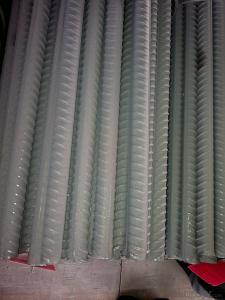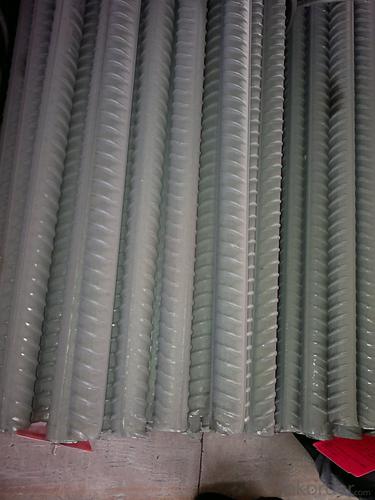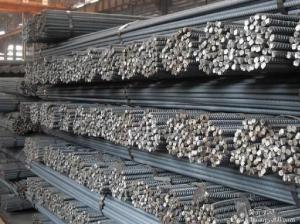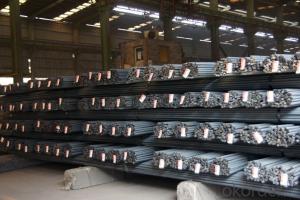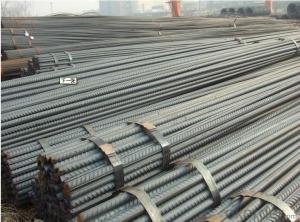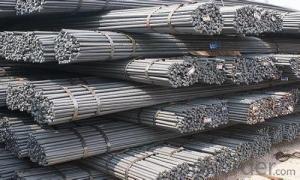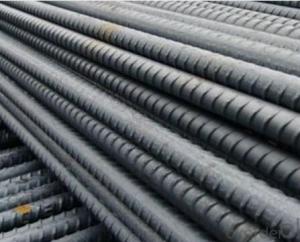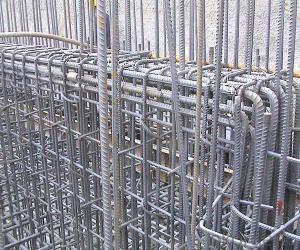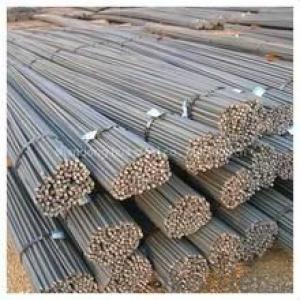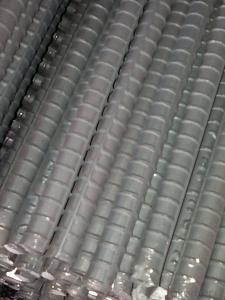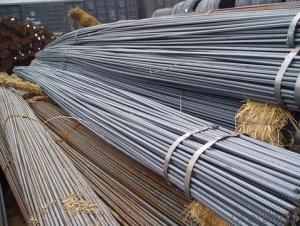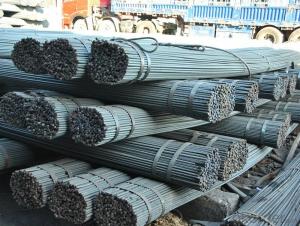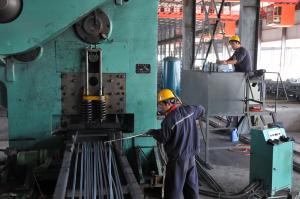Deformed Steel Bar, Concrete Reinforcing Steel Rebars
- Loading Port:
- China main port
- Payment Terms:
- TT or LC
- Min Order Qty:
- 100 m.t.
- Supply Capability:
- 100000 m.t./month
OKorder Service Pledge
OKorder Financial Service
You Might Also Like
Product Description:
OKorder is offering Deformed Steel Bar, Concrete Reinforcing Steel Rebars at great prices with worldwide shipping. Our supplier is a world-class manufacturer of steel, with our products utilized the world over. OKorder annually supplies products to African, South American and Asian markets. We provide quotations within 24 hours of receiving an inquiry and guarantee competitive prices.
Product Applications:
Deformed Steel Bar, Concrete Reinforcing Steel Rebars are ideal for structural applications and are widely used in the construction of buildings and bridges, and the manufacturing, petrochemical, and transportation industries.
Product Advantages:
OKorder's Deformed Steel Bar, Concrete Reinforcing Steel Rebars are durable, strong, and wide variety of sizes.
Main Product Features:
· Premium quality
· Prompt delivery & seaworthy packing (30 days after receiving deposit)
· Can be recycled and reused
· Mill test certification
· Professional Service
· Competitive pricing
Product Specifications:
Manufacture: Hot rolled
Grade: HRB335,HRB400,HRB500
Certificates: ISO, SGS, BV, CIQ
Length: 6m – 12m, as per customer request
Packaging: Export packing, nude packing, bundled
| DEFORMED BAR | |
| SIZE d(mm) | theoretical kg/m |
| 6 | 0.222 |
| 8 | 0.395 |
| 10 | 0.617 |
| 12 | 0.888 |
| 14 | 1.21 |
| 16 | 1.58 |
| 18 | 2 |
| 20 | 2.47 |
| 22 | 2.98 |
| 25 | 3.85 |
| 28 | 4.83 |
| 32 | 6.31 |
FAQ:
Q1: what is the difference between actual weight and theoretical weight?
A1: All the section steel has two weights: actual weight and theoretical weight. Actual weight is the weighing out when the product delivered from the mill. Theoretical weight is calculated by pieces. The invoice can be based on each of them as your request.
Q2: How do we guarantee the quality of our products?
A2: We have established an advanced quality management system which conducts strict quality tests at every step, from raw materials to the final product. At the same time, we provide extensive follow-up service assurances as required.
Q3: How soon can we receive the product after purchase?
A3: Within three days of placing an order, we will arrange production. The normal sizes with the normal grade can be produced within one month. The specific shipping date is dependent upon international and government factors, the delivery to international main port about 45-60days.
Images:
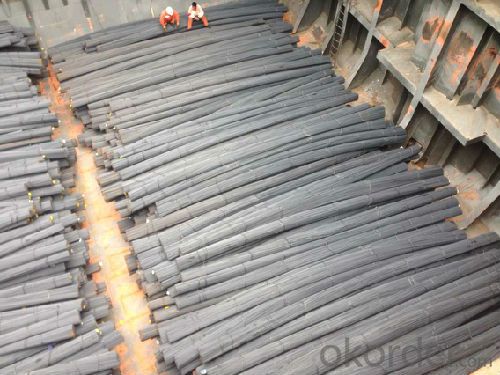
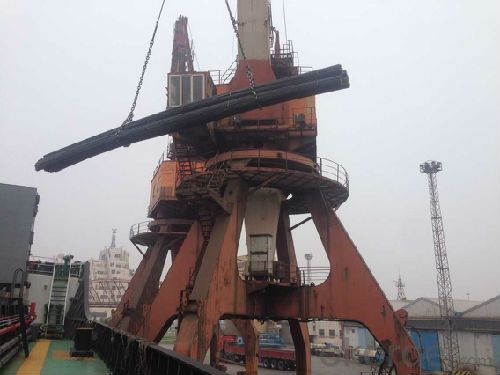
- Q: Can steel rebars be used in tunnel boring machine (TBM) construction?
- Yes, steel rebars can be used in tunnel boring machine (TBM) construction. Rebars are commonly used in the construction industry to reinforce concrete structures, including tunnels constructed using TBMs. The purpose of using rebars is to provide additional strength and durability to the concrete lining of the tunnel. These rebars are typically placed within the concrete lining during the construction process to enhance its structural integrity and ability to withstand external forces. In TBM construction, the rebars are carefully positioned and secured to ensure proper reinforcement throughout the tunnel. Therefore, steel rebars play a crucial role in the construction of tunnels using TBMs.
- Q: Thread steel 20*9 one is 2.001T. How many pieces of this one?
- Steel is known as hot rolled ribbed bar. Ordinary hot rolled steel bars are made up of HRB and the minimum yield point of the brand. H, R, and B are the first letters in English for hot-rolled (Hotrolled), ribbed (Ribbed) and reinforced (Bars) three words. Hot rolled ribbed bar is divided into two levels, HRB335 (old No. 20MnSi), three HRB400 (20MnSiV, 20MnSiNb, old No. 20Mnti), four grade HRB500 three grade.
- Q: How do steel rebars impact the overall flexibility of a structure?
- Steel rebars impact the overall flexibility of a structure by providing reinforcement and increasing its strength. The addition of steel rebars enhances the structural integrity, allowing the structure to withstand external forces and stresses without deformation or failure, thus improving its overall flexibility and durability.
- Q: What are the different types of steel rebars used in earthquake-prone regions?
- In earthquake-prone regions, various types of steel rebars are used to enhance the structural integrity and resilience of buildings. These rebars are specifically designed to withstand the powerful forces generated during seismic events, thus reducing the risk of structural failure. The different types of steel rebars commonly used in earthquake-prone regions include: 1. Mild Steel Rebars (MSR): These rebars, also known as carbon steel rebars, are the most commonly used type due to their affordability and availability. MSR rebars have a relatively low yield strength, typically ranging from 250 to 420 megapascals (MPa). While they provide basic reinforcement, they are not specifically designed to withstand intense seismic forces. 2. High-Strength Deformed Bars (HSD): HSD rebars have significantly higher yield strength compared to MSR rebars, typically ranging from 415 to 600 MPa. These rebars are manufactured by subjecting carbon steel to additional heat treatment and controlled cooling, resulting in improved strength and ductility. HSD rebars are more resistant to seismic forces and are commonly used in earthquake-prone regions. 3. Stainless Steel Rebars (SSR): Stainless steel rebars are highly resistant to corrosion and possess excellent strength characteristics. They are commonly used in coastal earthquake-prone regions where exposure to saltwater or corrosive environments is a concern. SSR rebars provide enhanced durability and longevity, reducing the risk of structural damage caused by corrosion over time. 4. Fiberglass Rebars: Fiberglass rebars, also known as FRP (fiber-reinforced polymer) rebars, are non-metallic reinforcement alternatives gaining popularity in earthquake-prone regions. Made from glass fibers embedded in a polymer resin matrix, FRP rebars offer excellent resistance to corrosion, making them suitable for coastal regions. Although they have lower strength compared to steel rebars, FRP rebars have high tensile strength, making them a viable option for seismic reinforcement. 5. Galvanized Rebars: Galvanized rebars are carbon steel rebars coated with a layer of zinc to enhance corrosion resistance. The zinc coating acts as a sacrificial layer, protecting the underlying steel from corrosion. While galvanized rebars are not specifically designed for seismic resistance, they offer improved durability in earthquake-prone regions with high moisture or corrosive conditions. It is important to note that the selection of steel rebars in earthquake-prone regions depends on various factors, including the level of seismic activity, building codes and regulations, budget constraints, and specific project requirements. Consulting with structural engineers and adhering to local building codes is crucial in determining the appropriate type of steel rebars for seismic reinforcement to ensure the safety and resilience of structures in these regions.
- Q: What are the advantages of using steel rebars over other materials?
- There are several advantages of using steel rebars over other materials. Firstly, steel rebars have high tensile strength, which makes them extremely durable and capable of withstanding heavy loads and forces. Secondly, they have excellent bonding properties with concrete, ensuring a strong and reliable reinforcement system. Additionally, steel rebars are resistant to corrosion, which extends their lifespan and reduces maintenance costs. Lastly, steel rebars are readily available and cost-effective, making them a popular choice in construction projects.
- Q: Can steel rebars be used in modular bridges?
- Absolutely! Steel rebars are suitable for use in modular bridges. They are widely employed to reinforce concrete structures, such as bridges. In the case of modular bridges, where pre-fabricated components are brought together on-site, steel rebars play a crucial role in bolstering the concrete elements and offering extra support for the structure. By embedding the rebars within the concrete components, their tensile strength is amplified, thus safeguarding the bridge against cracking or collapsing, particularly when subjected to hefty loads. This reinforcement significantly contributes to the longevity and steadfastness of the modular bridge, rendering it a trustworthy and secure transportation option.
- Q: What are the challenges associated with the installation of steel rebars?
- There are several challenges associated with the installation of steel rebars. Firstly, the weight of the rebars can be a significant challenge. Steel rebars are heavy and can require heavy machinery or manual labor to lift and maneuver them into place. This can pose a risk to the safety of workers and may require additional time and resources to ensure proper installation. Secondly, the placement of rebars can be challenging, especially in complex or intricate structures. The rebars need to be accurately positioned according to the design and structural requirements, which can be difficult in areas with limited accessibility or in congested reinforcement zones. This requires skilled labor and careful coordination with other trades involved in the construction process. Another challenge is the corrosion protection of rebars. Steel rebars are susceptible to corrosion when exposed to moisture and chemicals in the environment. Therefore, proper measures need to be taken to ensure adequate corrosion protection, such as using protective coatings or ensuring proper concrete cover, which adds complexity to the installation process. Additionally, the coordination between different construction teams is crucial when installing rebars. The rebars need to be properly integrated with other structural elements, such as columns, beams, and walls. This requires effective communication and collaboration between the design team, steel fabricators, and construction teams to ensure seamless integration and avoid any conflicts or delays. Furthermore, the installation of rebars often involves working at heights or in confined spaces, which presents additional challenges in terms of safety and accessibility. Adequate safety measures, such as scaffolding, harnesses, and proper training for workers, are necessary to mitigate the risks associated with working at these conditions. Lastly, the cost of steel rebars can be a challenge, especially when working with tight budget constraints. Steel rebars are a significant component of the construction process, and their cost can fluctuate due to market conditions or availability. This makes it crucial for project managers to carefully plan and budget for the installation of rebars to avoid unexpected cost overruns. In conclusion, the installation of steel rebars comes with various challenges, including the weight of the rebars, accurate placement, corrosion protection, coordination with other trades, working at heights or in confined spaces, and cost considerations. Addressing these challenges requires skilled labor, proper planning, effective communication, and adherence to safety protocols.
- Q: How are steel rebars tested for tensile strength?
- Steel rebars are tested for tensile strength through a process called tensile testing, where a sample of the rebar is subjected to an applied force until it breaks. The force applied is gradually increased, and the corresponding elongation and load values are recorded. This allows for the determination of the maximum force the rebar can withstand before failure, providing a measure of its tensile strength.
- Q: Can steel rebars be used in structures with high levels of carbonation or acid attack?
- Structures with high levels of carbonation or acid attack should avoid using steel rebars. Carbonation occurs when alkaline compounds in concrete react with carbon dioxide from the atmosphere, resulting in a decrease in the concrete's pH level. This can cause the corrosion of steel rebars, as the lower pH levels create an acidic environment that promotes rusting. Similarly, acid attack happens when structures come into contact with acidic substances like industrial chemicals or acid rain. Acidic environments accelerate the corrosion process by further lowering the pH levels of the concrete, increasing the risk of steel rebar deterioration. To prevent these problems, structures exposed to high levels of carbonation or acid attack can use alternative materials such as stainless steel, epoxy-coated rebars, or fiber-reinforced polymer rebars. These materials possess improved corrosion resistance properties, ensuring better durability in challenging environments. It is essential to consider the specific conditions in which the structure will be exposed and seek advice from structural engineers to select the most suitable materials for long-term performance and safety.
- Q: How do steel rebars affect the acoustic properties of a structure?
- Steel rebars can have a significant impact on the acoustic properties of a structure. Due to their high density and rigidity, steel rebars can act as conductors of sound and vibrations. This means that when sound waves or vibrations encounter steel rebars, they can easily be transmitted through them, resulting in increased noise levels and reduced acoustic insulation. In terms of airborne sound transmission, steel rebars can create a direct pathway for sound waves to travel through a structure. This can lead to the amplification of sound, especially in areas where rebars are in direct contact with walls or floors. As a result, the overall acoustic quality of the structure may be compromised, causing increased noise levels and decreased speech intelligibility. Steel rebars can also affect the structure's ability to block impact or structure-borne noise. When vibrations are generated, for example, from footsteps or machinery, the rigid steel rebars can efficiently transmit these vibrations throughout the structure. This can result in the amplification and propagation of structure-borne noise, making it more perceptible in different areas of the building. To mitigate the negative effects of steel rebars on the acoustic properties of a structure, various techniques can be employed. One common method is to use acoustically decoupled materials or resilient mounts to isolate the rebars from the surrounding structure, reducing the transmission of vibrations. Additionally, incorporating sound-absorbing materials, such as acoustic panels or insulation, can help to absorb and dampen sound waves, improving the overall acoustic performance of the space. Overall, steel rebars can have a significant impact on the acoustic properties of a structure. Their high density and rigidity make them efficient conductors of sound and vibrations, potentially leading to increased noise levels and reduced acoustic insulation. Therefore, careful consideration of acoustic design and appropriate use of soundproofing measures are essential in minimizing the adverse effects of steel rebars on the acoustic quality of a building.
Send your message to us
Deformed Steel Bar, Concrete Reinforcing Steel Rebars
- Loading Port:
- China main port
- Payment Terms:
- TT or LC
- Min Order Qty:
- 100 m.t.
- Supply Capability:
- 100000 m.t./month
OKorder Service Pledge
OKorder Financial Service
Similar products
Hot products
Hot Searches
Related keywords
